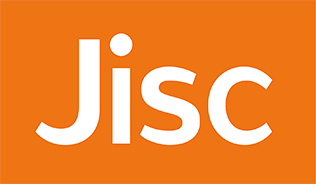Efficiency of Public Procurement Function in Moroocco
DOI:
https://doi.org/10.54536/ajebi.v3i2.2838Keywords:
Competition, Nash Equilibrium, Public Procurement Public, Morocco, Efficiency, Procurement Mecha-nismsAbstract
Public procurement, involving the public sector’s purchase of goods, services, or works from the pri-vate sector, accounts for 13-20% of global GDP (The World Bank, 2020). In Morocco, this sector rep-resents 17% of GDP (The World Bank, 2014) and is a crucial source of business for SMEs, which make up 95% of all businesses (Augier, Castel & El Malki, 2019). The efficiency of public procure-ment is a central issue in research due to its strategic, economic, and managerial impact (Kakwezi & Nyeko, 2019). While past research often focused on practical assessments (Flynn & Davis, 2014) and overlooked the market structure (KLEMPERER, 1999), based on a renewal of the game auction model for first price sealed bid auctions, along with both a qualitative and quantitative empirical research , this paper examines Moroccan public procurement efficiency from a market-based, game auction model perspective. It demonstrates that Morocco’s predominant open tender procedure exhibits pat-terns of an efficient game auction model with a Bayesian Nash equilibrium expression , suggesting opportunities for maintaining and improving the open tender meachnism itself and the surrounding procurement mechanisms.
Downloads
References
Arunava, S. (2007). The theory of mechanism design: An overview. Economic and Political Weekly, 42(49).
Athey, S. (2001). Single crossing properties and the existence of pure strategy equilibria in games of incomplete information. Econometrica, 69(4), 861-890.
Augier, P., Castel, V., & El Malki, T. (2019). Barriers to the integration of Moroccan SME’s in global value chains (pp. 2-30). FEMISE and Institut de la Méditerranée.
Bulow, J., & Klemperer, P. (1996). Auctions versus negotiations. The American Economic Review, 86, 180-194.
Gibbons, R. (1992). Game theory for applied economists (pp. 155-158). Princeton University Press.
Hurwicz, L., & Reiter, S. (2006). Designing economic mechanisms. Cambridge University Press.
Klemperer, P. (1999). Auction theory: A guide to the literature. Journal of Economic Surveys, 13, 227-286.
Kuhn, S., & Zalta, E. (1997). Prisoner’s dilemma. Stanford Encyclopedia of Philosophy. Stanford University.
Lebrun, B. (1996). Existence of an equilibrium in first price auctions. Economic Theory, 7(3), 421-443.
Milgrom, P., & Weber, R. (1982). A theory of auctions and competitive bidding. Econometrica, 50(5), 1089-1122.
Mougeot, M., & Naegelen, F. (1988). Analyse micro-économique du code des marchés publics. Revue économique, 39(4), 725-752.
Nash, J. (1950). Non-cooperative games (PhD thesis). Princeton University.
Osborne, J. (2000). An introduction to game theory. University of Toronto, Department of Economics.
Reny, P., & Zamir, S. (2004). On the existence of pure strategy monotone equilibria in asymmetric first-price auctions. Econometrica, 724, 1105-1125.
Samuelson, P. A. (2015). Proof that properly anticipated prices fluctuate randomly. In The World Scientific handbook of futures markets (Vol. 5, pp. 25–38). World Scientific Handbook in Financial Economics Series, World Scientific.
Secrétariat Général du Gouvernement. (2013). Décret sur les marchés publics. B.O. 6140, 1645-1704.
The World Bank. (2017). Benchmarking public procurement: Assessing public procurement regulatory systems in 180 economies (pp. 7-51). World Bank Group.
The World Bank. (2020). The global public procurement database. World Bank Group.
Thiétart, R. A., (2001). Doing management research: A comprehensive guide (pp. 51-291). Dunod.
Tong, L., Perrigne, I., & Quang, V. (2002). Structural estimation of the affiliated private value auction model. The RAND Journal of Economics, 33, 171-193.
Vickrey, W. (1961). Counterspeculation, auctions, and competitive sealed tenders. The Journal of Finance, 16(1), 8-37.
Waehrer, K. (1999). Asymmetric auctions with application to joint bidding and mergers. International Journal of Industrial Organization, 17, 437-452.
Watson, J. (2013). An introduction to game theory (pp. 360-377). Norton & Company.
Downloads
Published
How to Cite
Issue
Section
License
Copyright (c) 2024 Hamid Benabbou, Khddouj Karim

This work is licensed under a Creative Commons Attribution 4.0 International License.














